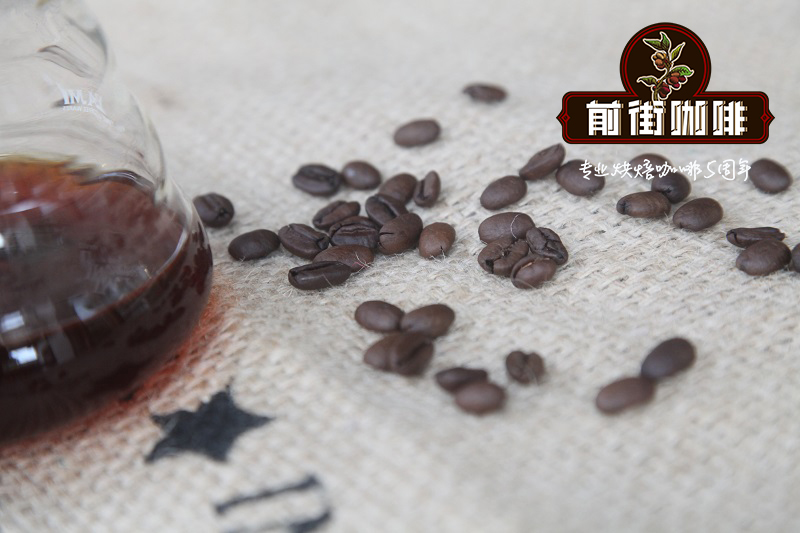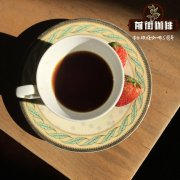Is Sumatran coffee the best coffee in Indonesia? is Sumatran coffee Arabica?

Professional coffee knowledge exchange more coffee bean information please follow the coffee workshop (Wechat official account cafe_style)
Harvest and handling methods:
Whether small sharecroppers or on medium-sized estates, all Arabica coffee is picked by hand in Indonesia. Because coffee cherries are all immature at the same time, farmers harvest every 10 days for five to six months.
They only pick red, ripe cherries to show the best quality, aroma and taste. When mechanically harvested coffee, underripe cherries will reduce the aroma of the coffee and have a rougher taste.
After harvest, these special coffees are processed in a variety of ways, and the final coffee product will have its own unique taste and aroma.
Generally speaking, these features can improve the quality of coffee. However, poor or uneven treatment can lead to the loss of flavor and turbidity of coffee.
The main three processing methods are 1. Dry 2. Peel in wet (semi-washed) 3. Water washing
Most small farmers in Sulawesi, Sumatra, Flores and papua have a unique process of handling coffee, which is called giling basah in Indonesian and translated as Wet Grinding.
In this technique, the farmer uses a machine to remove the cherry shell. There is still a lot of slime on the coffee beans and then stored for about a day.
During this period, the mucus will be washed away. By this time Sumatran coffee is partially dry and can be sold (about 30% to 35% humidity).
In this semi-wet state, the shell of the coffee is removed, giving the beans a unique dark blue, which reduces acidity and increases the body alcohol thickness of the coffee, creating this classic Indonesian coffee.
In Indonesia, Sumatran coffee is called Mantenin, which is neither a coffee variety nor a producing area, but it is actually the name of a local race. Lindong is a small town near Lake Toba, which is the largest volcanic lake in the world and its hinterland is very large, so the coffee quality of Sumatran coffee varies greatly from the north to the east. And this is Mantenin, the highest grade coffee in the Lindong producing area.
This area is flat at an altitude of about 1300-1600 meters, and the soil fertility is moderately rich in organic matter. Most coffee trees are shaded and planted. Traditionally, shade trees can maintain moisture and increase soil fertility. Most coffee women carry out weeding and fertilization with their bare hands, and coffee cherries are harvested and removed artificially when they turn red and mature. Wet pods are placed in a plastic bag for 10-12 hours to ferment, and then pectin, floats and shells are removed manually, rarely using a machine. Unlike Central and South America, Indonesian coffee beans have a unique semi-aqueous method, called Giling Basah treatment (the same as Wet Hulled Process).
Coffee beans treated with Giling Basah have low acidity and thick Body.
Important Notice :
前街咖啡 FrontStreet Coffee has moved to new addredd:
FrontStreet Coffee Address: 315,Donghua East Road,GuangZhou
Tel:020 38364473
- Prev

The relationship between Sumatran Coffee and Manning is the recommended Price of Sumatran Coffee Brand
Professional coffee knowledge exchange more coffee bean information please follow the coffee workshop (Wechat official account cafe_style) Indonesia-Sumatra-Lindong Manning coffee beans-Lindong is a small town near Lake Toba, which is the world's largest volcanic lake, the hinterland is very large, so the coffee quality gap from the north to the east will be very large, and this is Lin.
- Next

What is the golden green mark of Rose Summer Village in Ethiopia? What are the flavor and taste characteristics of Rose Summer Coffee in Ruoxia Village?
Professional coffee knowledge exchange more coffee bean information Please pay attention to the coffee workshop (Wechat official account cafe_style) in the internal grading system in Ruoxia Village, the green standard batch flavor still has the characteristics of variety and plot, but in the internal cup test, the flavor is slightly weaker than the gold standard and red standard batch. But this
Related
- Does Rose Summer choose Blue, Green or Red? Detailed explanation of Rose Summer Coffee plots and Classification in Panamanian Jade Manor
- What is the difference between the origin, producing area, processing plant, cooperative and manor of coffee beans?
- How fine does the espresso powder fit? how to grind the espresso?
- Sca coffee roasting degree color card coffee roasting degree 8 roasting color values what do you mean?
- The practice of lattes: how to make lattes at home
- Introduction to Indonesian Fine Coffee beans-- Java Coffee producing area of Indonesian Arabica Coffee
- How much will the flavor of light and medium roasted rose summer be expressed? What baking level is rose summer suitable for?
- Introduction to the characteristics of washing, sun-drying or wet-planing coffee commonly used in Mantenin, Indonesia
- Price characteristics of Arabica Coffee Bean Starbucks introduction to Manning Coffee Bean Taste producing area Variety Manor
- What is the authentic Yega flavor? What are the flavor characteristics of the really excellent Yejasuffi coffee beans?

